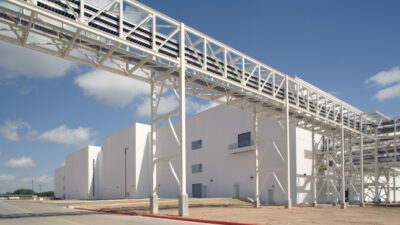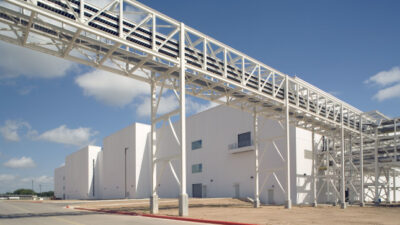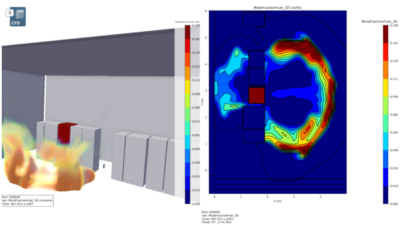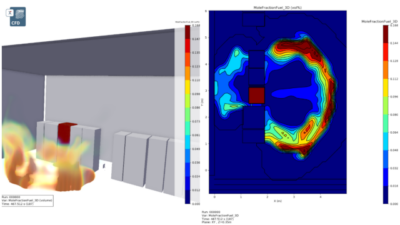Themed entertainment provides electrical engineers with the unique opportunity to think outside the electrical design "box." These projects challenge designers and contractors to confront and solve problems that they previously had never encountered. And it is accomplished within a highly themed environment and with very stringent budgets.
Themed entertainment provides electrical engineers with the unique opportunity to think outside the electrical design “box.” These projects challenge designers and contractors to confront and solve problems that they previously had never encountered. And it is accomplished within a highly themed environment and with very stringent budgets.
More than any other type of project, themed entertainment venues also give the engineer an opportunity to touch the lives of literally millions of people. Recent statistics show that more than 324 million guests visited U.S. theme parks last year.
The electrical engineer plays many roles on an entertainment project, but generally speaking, the central mission is to enhance the guest experience by designing highly reliable systems. Not only does downtime for featured attractions equal lost revenue, it also means unhappy guests. The term “themed entertainment” covers a wide range of facility types, including: common restaurants, merchandise shops, everything from amphitheaters to 4-D theaters, interactive animal exhibits, thrill rides and water features. Whatever the type of facility, the power distribution design is what makes it all possible.
Here, the intent is to convey as much information as possible regarding power distribution design techniques as they relate to distribution, reliability and quality. To achieve this goal, we will consider the design a complete theme park, thus giving us the ability to address design aspects and considerations for as many types of entertainment projects as possible.
The Big Picture
First and foremost, the engineer must determine the power distribution method that will be applied to the project. In the case of many theme parks, it is best to serve the park with a primary medium-voltage loop system. The distribution system for the park is similar to that of a small city or college campus, with a primary loop serving switches which, in turn, feed sub loops.
The primary loop is often fed from more than one source. This flexibility of design allows for isolation of portions of the distribution system. Isolation can be through a manual switching system or through an automated system, as budget and program allow.
From this point, the engineer must determine what voltage levels will be used to serve various types of buildings. In most cases, it will be necessary to provide primary transformers with 480-volt secondaries for full-service restaurants, rides, attractions and animal exhibits. Primary transformers with 208-volt secondaries will most likely serve merchandise shops, small theaters and drink-stand facilities. These types tend to be driven by lighting loads. Surrounding buildings, such as food and retail carts as well as interactive water features, should be considered when selecting the service voltage for a facility, as it is best to serve these small loads from the larger buildings.
Regardless of service size or voltage level, two things should always be provided:
-
Metering with remote monitoring capabilities in all incoming service panels, as well as for any panels servicing smaller exterior facilities. This will allow the park’s engineering staff to monitor system performance and cost from a centralized location.
-
At least two levels of surge suppression on all buildings. In addition to service conductors, it may be necessary to provide surge suppression on any power, communication or lighting conductors leaving the building to service equipment located at the site, especially in geographic areas that are prone to heavy lightning activity.
Attention to Specifics
Next, the design engineer’s task is to determine what systems will be needed for each of the various types of buildings, as well as how these systems will need to be served and protected. Possible systems include kitchens, lighting, communications, point of sale, security, fire alarm, audio, show effects, water effects, pyrotechnics, HVAC, plumbing and animal life support systems. The types of and complexity of these systems will help determine what power distribution infrastructure should be provided.
Beyond the above mentioned systems, a multitude of motor loads will exist within many buildings. Large motor loads controlled by variable-frequency drives should be specified with line- and load-side filters to help alleviate electrical noise. In addition, motors located throughout the site—pumps for water effects, motors for various rides and pumps in filtration yards—should have VFDs located as close as practical, thus shortening their secondaries. This will help alleviate reflected wave overvoltage conditions at the motor.
It has often been said that a themed entertainment project doesn’t stop changing until the day it opens. With this in mind, it is a good strategy to specify the incoming service panels with a high amount of spare capacity, as well as electrical rooms with plenty of spare wall and floor space. It isn’t uncommon for food carts, retail carts and other new power requirements to be added on the site in close proximity to the building. Building in this extra capacity early will allow for ease of change later. On that note, several spare conduits should be provided from a building’s electrical room to key areas of the project.
Emergency Strategies
But now that the normal power distribution system has been described, what about the emergency systems? When designing an emergency power system for these facilities, there are two primary goals: life safety for guests and life safety for animals.
Life safety issues include, but are not limited to egress lighting in buildings, smoke control, and safe ride operation and shutdown. Life safety for animals, if any, includes primarily operation of the filtration equipment. One can define three methods for accomplishing these two goals.
The first option is to provide a second incoming service to the park that could be switched to in the event of loss of the park’s primary incoming service. This is a good solution but should be supplemented by distributed generation at critical areas throughout the park.
The second option is to provide centralized power generation, such as in a central energy plant. Again, this is a good solution at times but could greatly increase site cabling costs.
The third option is to provide distributed generation throughout the park. This should include local generation serving filtration yards and rides, as well as central battery systems to handle emergency lighting loads in buildings. Localizing generation helps to reduce site-cabling costs and allows for flexibility of sizing, but results in increased maintenance costs and takes up valuable space. Using central battery systems for emergency lighting systems helps to reduce maintenance costs by consolidating batteries into one location. It’s an added benefit because it allows for the use of existing fixtures for emergency lighting purposes.
Some Final Considerations
In conclusion, when designing any entertainment project, an electrical engineer should keep in mind several factors. It will be a highly themed environment. As always, the M/E/P systems budgets will be tight. There will be a need to look ahead to the potential systems going into the project today or next year. There are various options on methods of distributing power throughout the site. And last, but not least, the engineer must consider the system power quality and surge suppression issues.
It’s all about enhancing the guest experience. If they address all of these issues up front and throughout the design process, designers will be on the road to building a successful themed entertainment project.
Themed Entertainment Projects: What Designers Need to Know
The guest experience is the reason the project is being built, and the electrical design can greatly influence this experience on many levels, from lighting design to life safety.
Flexibility of sectionalization of distribution systems is critical. The engineer must work closely with the owner to identify attractions, restaurants and merchandise buildings deemed most important to guest satisfaction and park economic goals. These facilities have multiple power sources for increased reliability.
Space is at a premium. As beautiful as pad-mounted switches and transformers may be to engineers, the average guest is not impressed. Service areas must be screened or themed so as not to impact the guest experience.
Centralized batteries should be considered for highly themed spaces. This allows the engineer to use aesthetically pleasing fixtures for emergency purposes.



